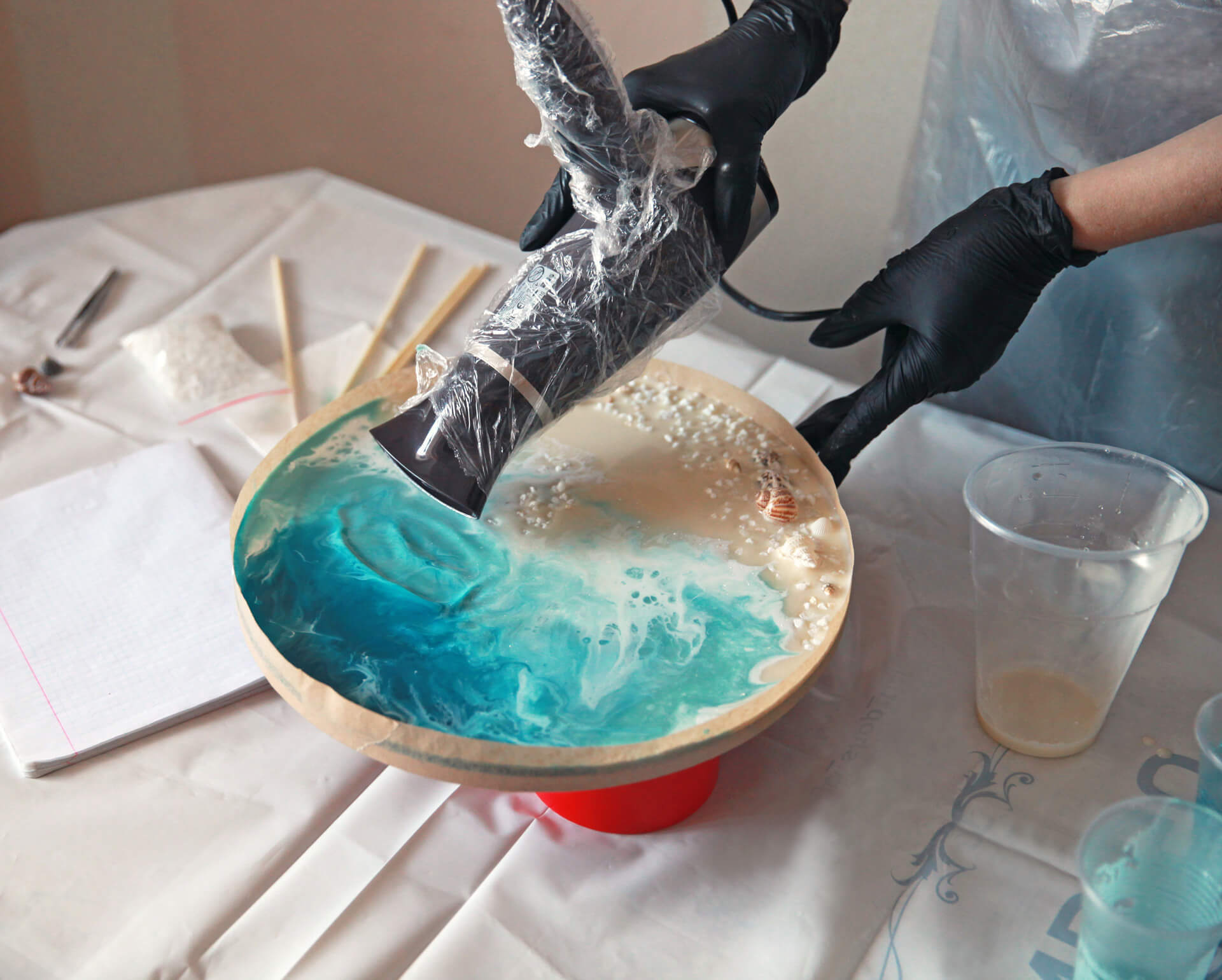If you’re someone who is into DIY projects then you already know that epoxy resin stands as a true marvel in arts and other fields. Also known as polyepoxide, we commonly see craftsmen use this to create those stunning river tables or durable floor coatings. Be that as it may, caution is still key when it comes to applying this material.
Handling polyepoxide requires careful precision to ensure both safety and superb results. If you want your creative visions to come to life flawlessly, you have to know how to use it right.
In this article, you’ll find the much needed steps to effectively and safely use this material. Every step is designed to make your projects not only beautiful but also rock-solid and secure. With careful attention and precise methods, you’ll master the art of using polyepoxide. Now, let’s dive in to learn about these safety precautions. Together, we’ll transform your projects to impressive masterpieces.
Understanding Epoxy Resin
Polyepoxide, a synthetic material, is notorious for its unparalleled adhesive strength. It is used by many because of its extraordinary resistance to heat and other chemicals. You’ll find this versatile material being used everywhere—from intricate art pieces and construction projects. It’s even used in high-end manufacturing due to its durability and stunning visual appeal.
Having said all that, before you plunge into your next venture, familiarize yourself first with the various types. This is very important. Are you considering casting resin or perhaps coating resin? Each type has its particular strengths, catering to specific needs. Just think about the impact of choosing the right resin for your project. These details will lift your craftsmanship from good to phenomenal.
Preparing Your Workspace
When working with polyepoxide, it’s important that you create a safe workspace. First and foremost, see to it that your area has excellent ventilation; those fumes can be quite harmful. Cover all surfaces with plastic sheeting or disposable paper. This is to protect the surfaces against any accidental spills.
Furthermore, a perfectly organized workspace, with every tool and material within arm’s reach will drastically reduce risks. This meticulous setup will make your process easier for you. Starting from the initial setup right through to the final touches, each step is a must.
Essential Safety Gear
Before you begin with handling polyepoxide, make sure you’re wearing the proper safety gear. Remember that this is imperative. This material can be harmful to the skin and cause irritation so start with nitrile gloves. These are your first line of defense against skin contact with this potent material. Safety goggles are also a must—these will protect your eyes from any unexpected splashes.
Additionally, don’t overlook a respirator mask; it’s needed for avoiding inhalation of toxic fumes. See to it that you wear long sleeves and pants as well. It’s critical for minimizing skin exposure. When you’re fully protected from head to toe, then you can begin handling resin. Always properly equip yourself to maintain your health and safety.
Mixing Epoxy Resin
Achieving a flawless project requires the precise mixing of resin and hardener. Follow the manufacturer’s instructions exactly for the correct ratio. Use clean, disposable containers to avoid contamination—do not overlook this step. Then, stir the mixture slowly and carefully. Avoid producing air bubbles as it can compromise the final product’s clarity and strength.
These bubbles are not just minor annoyances; they can significantly impact the quality of your work. Attention to detail at this stage can make or break your project. Remember to approach the process with care, making sure each step is executed with precision.
Applying Epoxy Resin
When you apply polyepoxide, you have to pour it slowly and with control. This is to manage the flow and prevent any messy spillage. To make it easier for you, use a spreader or brush to distribute the resin evenly across the surface. Also, if you’re working on intricate designs, here’s a tip: use a heat gun or torch to eliminate those pesky air bubbles. This way, you’ll see to it that the results will have a smooth finish.
While it might be tempting to rush, patience at this stage is absolutely needed. The difference between creating a masterpiece and making a mishap lies in these meticulous steps. Every small detail counts. So, take your time—don’t let haste ruin your painstaking work. Whether it’s a broad stroke or a tiny detail, each action impacts the final result.
Curing and Finishing
After you’ve evenly applied the material, allow it to cure. Do this according to the manufacturer’s guidelines. The curing process can take several hours to a few days, depending on the resin type and thickness. Here’s the tricky part though, resist the urge to touch it. It’s tempting, yes. But it’s a must that you do not disturb the polyepoxide during this time. Even slight disruptions can lead to unwanted flaws. So, patience is key.
Once the resin has cured, the real magic begins. You can sand and polish the surface to reveal a professional, stunning finish. Every step, from waiting to final touches, adds to the quality of the finished project.
Cleaning Up
A safe workspace is nothing without a proper cleanup; this is important. You don’t want to begin another project in a contaminated dirty space. So dispose of used containers and mixing tools according to local regulations. If you have uncured resin on your surfaces, use isopropyl alcohol to clean it up and ensure no sticky residue remains.
Moreover, see to it that all safety gear, from gloves to masks, is either thoroughly cleaned or properly disposed of. A tidy workspace isn’t just about cleanliness; it’s about maintaining safety and efficiency. You’ll have peace of mind knowing that you’re working in a hazard-free environment. Everything counts—from proper disposal to meticulous cleaning.
Key Takeaway
When working with epoxy resin, you have to remember to take safety precautions. You will be producing stunning and durable projects when you follow the proper steps and procedures. Safety must always come first before beginning. When you follow essential steps and take necessary precautions, you can protect yourself from unwanted mishaps. Also, you ensure a safe working environment.
Regardless if you’re a seasoned DIY enthusiast or just a beginner, understanding this versatile material is important. It’s all about marrying creativity with caution. You’ll surely find the joy in finishing a smooth and flawless piece, knowing you took every needed precaution. Every stage—from preparation to final touches—is important. So when you dive into your next project, make safety and excellence your top priorities!



